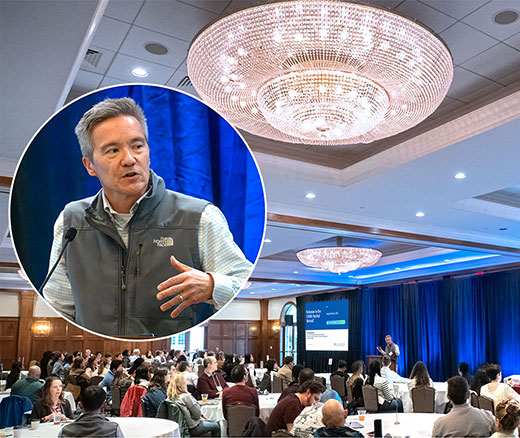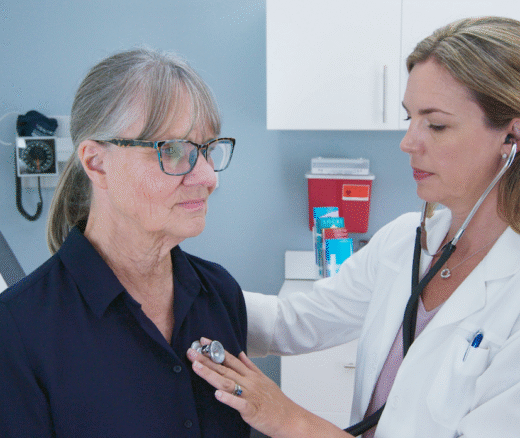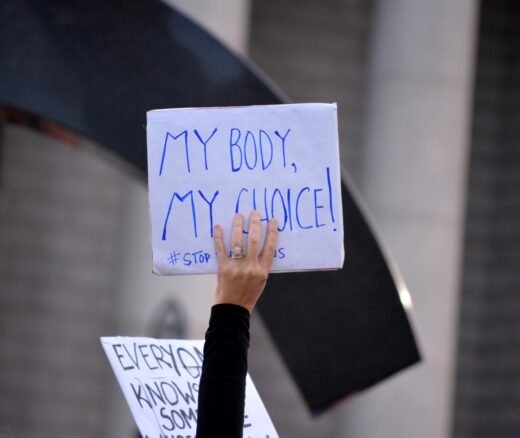
Penn CHIBE Retreat Eyes New AI Tools to Get Evidence to Policymakers
More Focused and Comprehensive Large Language Model Chatbots Envisioned
News
Fourteen years ago, along with everything else it was, the Affordable Care Act (ACA) was a mandate to transition the U.S. health care system’s payment systems away from fee-for-service and toward value-based payment models—a quest that has since been the subject of endless debate. In 2021, the Centers for Medicare and Medicaid Services’ (CMS) Center for Medicare and Medicaid Innovation (CMMI) issued a white paper outlining its strategy for advancing value-based payment (VBP) conversions over the next decade and noted it “will be critical to increase the reach of value-based models to underrepresented and underserved populations.”
Those populations are disproportionately served by the 1,368 Federally Qualified Health Centers (FQHCs) that administer 15,000 local community health clinics across the country where 30 million low-income patients get their care. So, 14 years after the ACA and nearly four years after CMMI’s new vision, how are those community centers actually doing in terms of making the leap to value-based care?

That question was at the center of the “Advancing Value-Based Care in Community Health Centers” November 8 virtual seminar organized by the University of Pennsylvania’s Leonard Davis Institute of Health Economics (LDI).
Moderated by LDI Senior Fellow Paula Chatterjee, MD, MPH, Assistant Professor at the Perelman School of Medicine, the panel included Michael Curry, Esq., President and CEO of the Massachusetts League of Community Health Centers; Amanda Pears Kelly, CEO of Advocates for Community Health and Executive Director of the Association of Clinicians for the Underserved; and Leighton Ku, MPH, PhD, Professor and Director of the Center for Health Policy Research at the George Washington University’s Miliken Institute School of Public Health.
As she opened the session, Chatterjee explained that “Federally Qualified Health Centers provide essential health care and social services for low-income, uninsured, and underinsured people in the United States. They are a bedrock function of the health care safety net but also face substantial financial challenges because so much of the care that they provide is often uncompensated care,” she said. “But it’s not clear whether value-based payment efforts are really achieving their intended goals in the FQHC context, namely, to improve quality and contain costs. Understanding this is really important given the unique financial challenges confronting these centers, the multidimensional needs of the patients that they serve, and their critical role in the health care safety net.”
Offering services far beyond those of traditional primacy care practices, FQHCs take a holistic approach and, along with medical care, offer mental health and substance abuse services; nutritional education and food assistance; housing support; transportation assistance; language interpretation services, and other social services. Their staffs often include teams of community health workers—trained community members who function as one-on-one liaisons and patient navigators out in the served community.
In an era when overwhelming evidence connects the poor health and outcomes of marginalized populations to the social determinants of health (SDOH) that systematically erode their wellbeing, few mainstream health institutions have comprehensively addressed these social determinants as an integral part of medical care. What makes FQHCs so different is that they are trying to do that.

The panelists all pointed out the same defining feature of FQHCs: they consistently provide high quality care despite the myriad challenges and often crippling complexities they operate in. In its August 2024 report from the National Survey of Federally Qualified Health Centers, the Commonwealth Fund reported that FQHCs “regularly meet or exceed national benchmarks for hypertension and diabetes control, while reducing costs for patients and payers compared to other care settings.”
The panel’s discussions about the scale and speed of FQHCs’ conversion to value-based care and payment practices summarized many of their health center network’s current operational challenges. These include:
Workforce shortages: Over 70% of FQHCs report shortages of physicians, and nurses. Seventy-seven percent are experiencing a shortage of mental health providers.
Financial constraints: 65% of FQHCs report that they lack the financial resources to address unmet patient needs. Fragmented and uncertain funding sources impact their ability to expand services and maintain operations. Tight budgets limit their capacity to invest in critical technology upgrades.
Value-based payment system incompatibilities: Some centers fear that switching to VBP practices would expose them to downside financial risk. Panelists also pointed out how current VBP systems (that are essentially designed for doctors’ offices) don’t structurally fit the full range of FQHC operations and services.
Medicaid redeterminations and enrollment changes: The ongoing Medicaid unwinding process is affecting many of their patients’ coverage and the centers’ financial stability.
Regulatory burdens: Navigating health care regulations and managing reporting requirements frommultiple funding sources is time-consuming and costly for the centers.
Overall, one of the main problems that FQHCs face is inadequate and fragmented funding.
Panelist Ku explained: “One of the reasons value-based payments are a little troublesome in FQHCs is that there are like, 10 to 15 funding streams coming in to a typical center—Medicaid managed care systems, various fee-for-service entities, private insurance, Health Resources and Services Administration’s (HRSA) Ryan White HIV/AIDS Program, the Public Health Service Act’s Title X, and on and on. And they’re all unique and want different performance monitoring systems, so you have a lot of diverse reporting requirements. The bottom line is you’re not getting much bang for the buck because the system is so fragmented.”

One of the key streams of funding is the FQHC Prospective Payment System (PPS), which reimburses for services provided to Medicaid beneficiaries. The PPS uses a predetermined, fixed payment rate for each patient visit, regardless of the actual intensity or duration of services provided to each patient.
Panelist Curry said the annually set PPS rates often fall short of the actual costs of providing the patient care. In addition, he pointed out that “many states have failed to fully implement the PPS methodology to the full extent outlined in the federal statute, undermining its thoughtful design and intent and denying FQHCs needed financial support.”
Panelist Kelly concurred and noted “wild variation from state-to-state” in PPS rates. “Unfortunately, there are places that haven’t adjusted those rates for years — and if we think about what has gone on just through the pandemic and where we are economically right now, the impact has been massive for the centers,” she said.

In recent years, a number of other funding streams have emerged to specifically support value-based care and payment operations in FQHCs. Some, like CMS’ Making Care Primary Model and Accountable Care Organization Realizing Equity, Access, and Community Health (ACO REACH), are federal programs. Others are state-specific programs, which often involve a shift away from Medicaid PPS payment approaches toward Alternative Payment Models (APMs).
One way of getting a sense of how far VBP care has advanced within FQHCs is to analyze how large a percentage of overall operational funds are coming from these specialized VBP funding sources.
Ku, who has recently analyzed payment patterns for FQHCs reported that “the amount of money they are getting from the value-based payment systems is a relatively small share of their total mix of revenue. It’s like a teacup in a roaring sea of larger currents, like Medicaid’s unwinding, COVID supplemental funds going away, widespread workforce shortages, and inflationary pressures.”
“In the larger picture, we think the majority of the health centers are in the red and that’s a bad situation as we approach 2025,” Ku continued. “Congress has not yet given appropriations for health centers for 2025. There’s a continuing resolution that ends in December. What will happen after that is not quite clear, given what is happening politically.”
As the session ended, Chatterjee asked the panelists what it would look like if they could start from scratch to create a value-based payment system for health centers that would support their mission of serving structurally marginalized patient populations in achieving population health equity.
Ku: “I actually think the underlying concept of the PPS methodology was not a bad idea, but part of the challenge is that it hasn’t kept pace with reality. If we could go back and redesign how the PPS system works, we could at least make sure that it gets adequately updated and is able to meet the real cost and purpose of the health centers.”
Curry: “The model should allow FQHCs to share in the savings that are generated in a total cost of care, and to continue to evolve their value-based models. We need time with this. We need to make sure that the investments are there. And, as a cautionary note, I’ll say that across the country, many state agencies don’t even understand the upfront nature and goal of a PPS model.”
Kelly: “The system would provide quarterly advance payments for Medicare and Medicaid and commercial insurers based on historic claims data, with a single set of quality measures aligned with that.”


More Focused and Comprehensive Large Language Model Chatbots Envisioned

Medicare Advantage Modestly Cut Black–White Disparities in Chronic Disease Prevention Compared to Traditional Medicare, but Care Gaps Remain for Latinx Populations

How Threatened Reproductive Rights Pushed More Pennsylvanians Toward Sterilization

Billing Codes That Flag Food, Job, or Housing Insecurity in Medical Records are Underused for the Sickest Medicare Patients

Promising New Evidence and What’s Next

Abortion Restrictions Can Backfire, Pushing Families to End Pregnancies